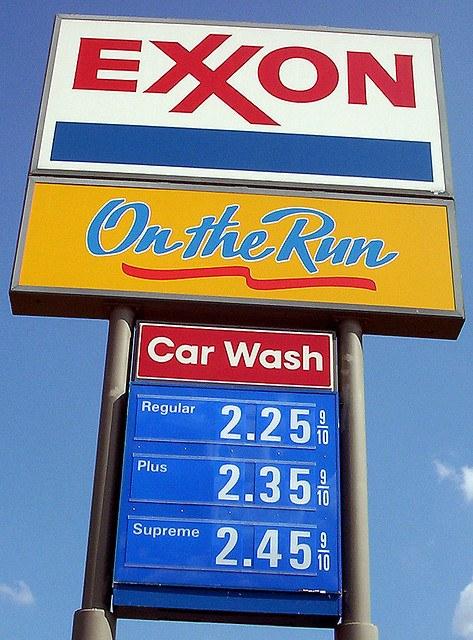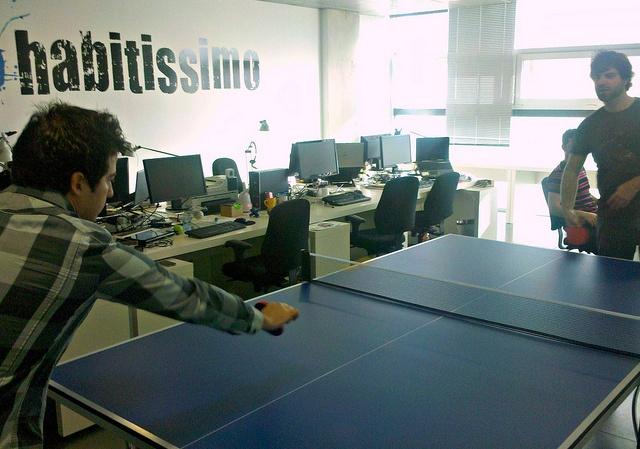So You Want to Be a Sustainable Business?


By April Brown
You might be asking yourself: What does a sustainable business look like? Where do I start?
The path toward organizational sustainability will look a little different for everyone. Simply speaking, a good first step is to make a plan that includes sustainability goals and activities that will support the organization in becoming more sustainable over time: It’s a journey, not a destination.
“In my opinion, there are four primary areas that you should consider when developing a sustainability investment plan: management infrastructure, eco-efficiency programs, strategic initiatives and marketing programs,” reflects Geoffrey Barneby of the FairRidge Group.
“Clearly, there is a need to address these areas somewhat sequentially; you cannot successfully market sustainability before making strategic changes, and you cannot develop strategic initiatives without already having an appropriate management infrastructure in place. There is, however, room for overlap and most mature companies manage to do all four in parallel.”
Setting measurable goals and tracking your progress is important, so it is good to identify your goals and opportunities before starting to retrofit the bathroom sink faucets. In a recent article on GreenBiz.com, a sustainability consultant shared feedback he's received from a client that also illustrates the traction integrated sustainability is gaining. He said:
"We've gone through a paradigm shift on sustainable development in the last year. It's no longer seen as an environmental thing. It's fully integrated into the way we think and plan around economic growth."
Sustainability efforts are, also, most successful when you elect and empower someone to spearhead your sustainability efforts and make sure your goals remain on track. This position is a 21st century invention that has created jobs in the leadership ranks of most large companies, including Fortune 500 companies and political and economic powerhouses. Depending on rank, authority and responsibility, titles range from “Chief Sustainability Officer” to “Sustainability Director” or “Sustainability Analyst.” Sustainability professionals, like any highly-paid professional, require a certain level of knowledge and training. While there are more and more undergraduate and graduate degrees with a focus on sustainability, there is a shortage of qualified professionals to lead and implement strategic sustainable business initiatives.
To help professionals keep up with the changing demands of the sustainable future, the Institute for the Built Environment at Colorado State University has created online courses for professionals to learn and practice the skills and tools they need to lead their organization’s sustainability initiatives. The online learning platform, which is being offered by OnlinePlus at Colorado State University, is intended for busy professionals; therefore classes are designed to accommodate typical business schedules.
"People that work in sustainability often come at it from one angle. They may ask, 'How do we best engage occupants for sustainability?' or 'How do we retrofit our facility to get the biggest bang for our buck?',” said Jeni Cross, Ph.D., associate professor of sociology at Colorado State and expert instructor for the Integrated Sustainability Management Certificate program. "While these are really important questions, this program focuses on the systems approach, which will teach you how to use the work in one quadrant to leverage bigger change in the other quadrants.”
To build the holistic mindset, the program is set up into four quadrants: people, resources, facilities and organization.
When you have created your plan and you've designated someone to implement it, the next question you might ask yourself is: How?
Much of the 'how' relies on people adopting more sustainable behaviors. Much about behavior change is to be learned from social sciences. Jeni Cross, leading sociology researcher at Colorado State, tell us about three myths of behavior change during a popular Tedx talk. Cross explains that we all think we know how to encourage people to adopt sustainable behaviors. However, most of our encouragement actually does nothing to change anyone’s behavior. There are proven techniques for engaging behaviors of occupants and employees that support the organizational sustainability goals that should not be overlooked.
Business leaders worldwide agree that sustainability is an opportunity for growth and innovation, according to a 2013 report of CEOs’ views on creating a sustainable economy. Organizational sustainability is one of the fastest developing sectors of business in our modern world. Business is developing a heightened awareness on the importance of global issues, including social justice, climate change, energy independence and water scarcity. Moreover, businesses are finding competitive advantage through sustainability and corporate responsibility.
As an organization or business, taking sustainable strides will sincerely help you keep up with the growing market and increasing demand for transparency and responsibility. In the process, you can make a better place for your employees and a better product for your customers. Start by making a sustainability plan, then designate a knowledgeable sustainability coordinator to spearhead the initiatives outlined in the plan. Use tools from social science to engage your employees and building occupants -- creating a sustainability-minded culture to meet your sustainability goals and making a lasting impact in your business.
Image credit: Don Shall
April Brown is a Projects Manager at the Institute for the Built Environment at Colorado State University. Her expertise is in integrated design, commercial green building strategies, sustainable operations and maintenance, facilitation & trainings, and LEED certification. April is an instructor for the Built Environment badge of the Integrated Sustainability Management professional certificate program.
Going to extremes: weird weather forecast to continue


Extreme weather events are becoming more common according to researchers at the University of East Anglia (UEA).
It is widely known that the Earth’s average temperature has been rising. But the new research shows that extreme temperature anomalies – readings well above or below the mean – are warming even faster than the overall average.
It comes after early figures from UEA showed that 2014 is on track to be the warmest year on record.
Researchers analysed temperature records for the years 1881 to 2013 from HadCRUT4 - a widely used data set for land and sea locations compiled by UEA’s Climatic Research Unit and the Met Office.
Prof Phil Jones, from UEA’s Climatic Research Unit, said: “Trends in extreme heat and cold are important because they have a large impact on water supplies, agricultural productivity and other factors related to human health and wellbeing.
“Improved understanding of the spatial patterns of change are vital for understanding the causes of recent extreme weather events.”
The research was led by Prof Scott Robeson from Indiana University in the US. He commented: “Average temperatures don’t tell us everything we need to know about climate change. Arguably, these cold extremes and warm extremes are the most important factors for human society.”
Picture credit: © Akulamatiau | Dreamstime.com
Connecting Your Business: From Smart Grid to 'Grid of Things'


You hear a lot of talk about the smart grid these days, and now here comes the California utility PG&E with a new twist of its own: the Grid of Things. As PG&E sees it, smart grid technology is only a partial step toward the grid of the future. The true grid of the future will ditch the utility's role as the power supplier to passive customers. Instead, each electricity customer can interact with the utility and its grid, by strategically deploying rooftop solar arrays, electric vehicles and other major electrical appliances.
The Grid of Things has enormous implications for business. In addition to providing unique new opportunities for bottom-line savings and energy security, the kind of interaction that PG&E envisions can also provide companies with new opportunities for customer service and brand enhancement.
Why utilities need a Grid of Things
The advent of sustainable energy technology means that utility companies can no longer measure their growth in terms of kilowatt hours. To retain and attract customers, they need to sell new services.
The smart grid, combined with the new Green Button Web-based information platform, has accelerated opportunities for selling energy management services. However, as more companies adopt on-site energy generation and storage, utilities still face the challenge of retaining and attracting customers for grid-supplied electricity.
PG&E's solution is to convince energy consumers that by hooking up to an interactive grid -- the Grid of Things -- they can squeeze more value out of their investment in electrical appliances.
The Grid of Things
Last week, PG&E President Chris Johns described the Grid of Things during a panel discussion hosted by the Bipartisan Policy Center. Positioning the concept as a "democratization of the grid," he dismissed the idea that grid connectivity will eventually disappear:
"We're going to discover that [new] energy technologies are tremendously more powerful and more valuable if they're wired together through the grid, which means the grid is not only going to continue to be relevant, it's going to be just as indispensable over the next 100 years as it was in the last 100 — maybe even more so."
PG&E's vice president of corporate strategy, Elisabeth Brinton, offered up more details at an industry conference earlier this fall. She describes the Grid of Things as an overlay of software systems on the familiar "wires, poles and substations."
The basic elements are these:
- A seamless combination of rooftop solar with energy storage and electric vehicles.
- Energy efficiency improvements that result from automation and other sophisticated energy management systems, including mobile platforms.
- New opportunities for utilities to measure and analyze their operations, leading to greater reliability.
- A balance between renewable sources and conventional sources, namely nuclear and natural gas.
As an aside, that last item may not strike you as particularly forward-looking considering the sustainability issues entwined with both nuclear energy and natural gas. However, despite the surging growth of renewable energy, PG&E and other utilities will most likely have to deal with an existing stock of conventional power plants for many years.
The advantage of connectivity
If the Grid of Things still sounds fairly abstract, the picture becomes more clear when you get down to boots on the ground.
Obviously, the many commercial properties that simply can't support an adequate solar array and energy storage of their own need connectivity to survive. But even those that could might choose not to for solid bottom-line reasons.
For starters, connectivity enables a business to keep its real estate resources focused on its primary activity. Take the case of a restaurant with a farm-to-table menu. All else being equal, a good use of spare real estate for such an establishment would be a garden for fresh produce, not a solar array -- and as much as we love them, solar panels are not particularly attractive in all settings.
Connectivity can also enable a business to extend additional services to its customers. While-you-wait electrical vehicle charging is an attractive service, for example, and connectivity enables you to offer it regardless of whether or not you have the opportunity for adequate on-site renewable energy. A new smart grid-enabled partnership between PG&E, Honda and IBM for electric vehicle charging also hints at how the Grid of Things concept can extend to public charging stations.
For businesses that do invest in on-site solar with energy storage, connectivity gives you get the best of both worlds. Your on-site micro-system could be called into "island mode" in case of a general grid disruption, but in the normal course of business you can take advantage of a seamless supply of electricity. The difference will be that instead of emanating from a few central power plants, this electricity "pot" will consist of contributions from individual contributors like yourself, as well as large-scale power plants.
Continued growth in the micro wind turbine sector also suggests how businesses can hook into the Grid of Things with high-visibility renewable energy technology that promotes their brand (check out a new pilot project involving Ford-branded micro wind turbines, for example).
Image (cropped): Flickr/hinkelstone
3 Reasons Why Oil Prices Have Collapsed


The oil industry has done a great job of self-promoting their increased production capacity as the reason for the collapse in oil and gasoline prices. Let’s get the facts right: The world has been, and continues to be, awash with oil supply. The world has been producing 90+ million barrels of oil per day for several years.
The reason oil cost $100 per barrel and gas prices sat above $4 per gallon was because of soaring global oil demand that was sucking up the world's oil production. What has changed in terms of collapsing gasoline prices is that the global demand for oil is falling. The three factors driving oil prices down are:
- Americans are driving more fuel-efficient vehicles
- The millennial generation is living a digital rather than fossil fuel-based lifestyle
- China’s economic growth slow-down has cut oil demand
It is this combination of reasons tied to reduced oil demand -- not increased oil supply -- that has collapsed oil prices and reduced your pump-price pain.
Vehicle fuel efficiency up 25 percent
The U.S. is on pace to buy 17 million new vehicles this year. These new vehicles have an average fuel efficiency that is 25 percent better than the vehicles we were purchasing right before the Great Recession. Because we are driving more efficient vehicles, we are also achieving 22 percent lower vehicle emissions compared to the vehicles we purchased just seven years. Most importantly: In terms of your pump prices, these new fuel-efficient vehicles are a major reason the U.S. has reduced its gasoline consumption by 6 percent compared to 2007. The net result is that competing oil companies have to cut gasoline prices or lose market share in response to lower demand.
Millennial generation chooses digital over gasoline
Much of the millennial generation is choosing an alternative life and work style than rush-hour commuting in gasoline-fueled vehicles. They are doing so for two reasons. The first is that they are still trying to financially grow past starting their careers during the Great Recession while also being saddled with school debt. Buying a vehicle does not fit into their budgets. Buying a gas-guzzler is a real budget killer.
The second reason the millennial generation is not buying gas-guzzling vehicles to use in a rush-hour commute is that this is just not “cool.” This is the generation that defines itself by being cool with a purpose. They seek a lifestyle that is affordable, socially engaged and environmentally responsible.
For the millennial generation, the burning of gasoline -- with its link to climate change -- is not cool. Using digital technology to work from home is cool. So is choosing to live closer to work to reduce commuting costs and emissions. What is cool with a purpose is walking, biking or using public transit. The net result is that the millennial generation is dramatically reducing their purchase of gasoline and gasoline vehicles compared to their parent’s boomer generation.
China’s slower growth cuts oil demand
China’s super-hot economic growth is cooling. Part of this slower growth is a normal economic maturation. China has created the world’s largest economic middle class in little over two decades. Double-digit incremental annual economic growth for another two decades is not sustainable.
However, another reason for the country’s slower economic growth is that China now confronts an environmental crisis: Sixty percent of its water supply is contaminated and is unfit for human consumption. Air pollution is a major health crisis where less than 1 percent of China’s 500 largest cities meet the World Health Organization’s air quality standards. The human health cost-consequences of China’s massive fossil fuel consumption are soaring health care costs and reduced worker productivity. In response, China is enacting new public policy to reduce its consumption of fossil fuels, including oil. China’s new approach is a significant price-eroding pressure on the global oil supply.
Technology crossroads: What if oil prices did not matter?
America is at a gasoline price crossroads. We are loving the lower pump prices. It is national news that Oklahoma became the first state to sell gasoline for less than $2 per gallon. The discouraging vehicle sales news is that with lower pump prices we are buying more full-size trucks and SUVs. The return of $3 and $4 per gallon will be the economic consequences if America goes back to buying gas-guzzlers.
California’s consumers are testing another path. California homeowners are buying rooftop solar at record levels to slash their power bills by 40 percent or more. What many of these homeowners are learning is that they can also eliminate their gasoline costs by using rooftop solar power. Many of California’s rooftop solar owners are leasing electric cars fueled from their roofs. They are finding that what they save in gasoline costs from using solar power more than pays for the lease payments on their electric cars. The emerging economics of homeowner solar in California looks like this:
- Zero cash down + guaranteed lower electricity bills
- Savings on gasoline costs > the lease of an electric vehicle
A clean technology crossroads is opening up for America. It can enjoy today's lower pump prices by buying full-size trucks and SUVs that will increase the demand for gasoline and drive up pump prices to $3 and $4 per gallon. Or America can invest in rooftop solar and electric cars so that oil prices and the price at the pump no longer matter.
Image credit: Flickr/philipsphotos
Bill Roth is an economist and the Founder of Earth 2017. He coaches business owners and leaders on proven best practices in pricing, marketing and operations that make money and create a positive difference. His book, The Secret Green Sauce, profiles business case studies of pioneering best practices that are proven to win customers and grow product revenues. Follow him on Twitter: @earth2017
Town Kitchen Launches Indiegogo Campaign to Empower Youth


Economists and educators have been working to resolve Oakland, Calif.’s endemic poverty problems for years. Almost a third of Oakland’s children live in households in which one or both parents are unemployed, and finding jobs for the city’s youngest employable sector is all the more challenging. But as one young woman demonstrated this year, it isn’t an insurmountable task. It just takes a little creative thinking.
Sabrina Mutukisna, founder of Town Kitchen, came up with a project that pairs the snacking needs of East Bay’s business sector and the drive and ingenuity of Oakland youth. The company employs low-income youth from West Oakland to prepare, box and deliver upscale lunches for businesses in the East Bay area. The company's concept is tailored to fit the needs of the small-to-medium business that wants good, versatile options to choose from for their boardroom meetings or casual office get-togethers.
According to Mutukisna, a lot of thought went into how to satisfy as many palates as possible with the company's daily offerings. Lunches these days aren’t a one-type-fits-all concept. For a business like Town Kitchen, versatility and variety are musts, especially in a world in which consumers' dietary limitations and preferences often shape the menu. To that end, she developed a weekly menu of four options that rotate periodically and can be creatively built upon as they go along.
“Right now we definitely make sure we have a vegetarian option,” Mutukisna said, and that is usually gluten free, “and one has a fish option, and then one is chicken or (other) meat.” She said vegan demand is high at the moment, but the menus are structured to reflect the feedback the company receives from its customers.
The meal preparation is overseen by a head chef, Jefferson Sevilla, who is co-owner of the pop-up Asian street-food restaurant Haro, Arigato in San Francisco and already has a lot of experience planning and overseeing niche lunch concepts. Mutukisna said that the company also plans to feature the talents of local chefs from around the Bay Area as the project grows.
“We are also working with guest chefs who are really excited about creating the menus,” said Mutukisna.
At the moment, the company is in soft-launch mode -- trying the menus out on companies around the area and taking feedback. But Mutukisna says Town Kitchen has bigger plans that include expanding both the size of the kitchen and the potential of its job training program. The team launched an Indiegogo campaign for $40,000 and set their sights on upgrading their program to accommodate the needed preparation stations.
“The right kitchen will allow us to lease a 2,000-square-foot kitchen where 10 youth will work alongside Bay Area superstar chefs to execute up to 600 lunchboxes a day.”
Mutukisna is no stranger to the kitchen or to youth empowerment programs: The brainchild behind specialty bakery Cynically Delicious, she has also been featured on HuffPost for her equal dedication to helping at-risk youth. She admits that Town Kitchen is a melding of these two passions and a reflection of her early years as a child of small-business owners.
And the Indiegogo site reflects this, with a carefully developed chart and stats to show they’ve done their homework in determining the funding that would be needed for each stage of growth. With some powerful support from the Institute for Sustainable Economic, Environmental and Educational Design (I-SEEED) and Youth Social Entrepreneurship for Economic Development (Youth SEED), Impact Hub Oakland, and various artisans like Sugar Knife Sweets and Kika’s Treats, Town Kitchen has been able to create a platform for ongoing expansion.
At Day 18, the company’s campaign is about half-way to the $40,000 mark. Like all campaigns, the team offers several tiers of donation levels with various perks and plenty of enthusiasm. The best perk of all, though, will be the sweet proof that community action and the foresight of one driven entrepreneur can make a difference where it counts.
http://vimeo.com/112294416
Image credit: Rev Stan
Mondelez Moves to Third-Party Sustainability Evaluation


Mondelez International, the multinational snack foods giant, has developed an outcome-based sustainability framework that will use an external party to measure the impact of its $200 million Coffee Made Happy program.
Mondelez, the world’s second largest coffee company, says the arrangement with the independent third-party organization, the Committee on Sustainability Assessment (COSA), will “provide unprecedented transparency on large scale” along the coffee supply chain.
Mondelez coffee brands include Jacobs, Carte Noire, Kenco and Tassimo. COSA will evaluate the “real impact experienced by farmers on the ground” of the Coffee Made Happy program. Program objectives aim to measure how Coffee Made Happy is achieving its objectives to improve farmers' business and agricultural skills, increase farm yields, and “engage young people and women in coffee farming so as to empower 1 million coffee entrepreneurs by 2020.”
Roland Weening, president of coffee for Mondelez, said in a press release that “this is important to guarantee the future of quality coffee to the world.”
The outcome-based evaluation framework is significant because it moves away from the usual transaction-based methods of monitoring and evaluation to a more inclusive, collaborative approach to sustainability along the supply chain. Weening says this “drives impactful investment, unprecedented levels of transparency and -- because we source from the projects where we invest -- ensures accountability to our partners and our consumers."
COSA is a global consortium of institutions that foster effective ways to measure and understand sustainability in the agri-food sector. Under its partnership with Mondelez, COSA will develop an evaluation framework that that builds on the company's existing use of 4C verification standards as the baseline for Coffee Made Happy. Evaluation will provide transparency to individual Coffee Made Happy projects already running in Honduras, Indonesia, Peru and Vietnam, as well as an “aggregated view” of positive change Coffee Made Happy is bringing across diverse geographies, Mondelez said.
Eventually the data collected in connection with the program will help build the world's largest database of coffee farm metrics, it continued.
Mondelez says the outcome-based evaluation framework is innovative and unique in focus and scale. Rather than only measuring the implementation of practices, it will measure the effective impact experienced by coffee farmers in two key areas:
- Yearly reporting: Implementation partners will collect data on key indicators for Coffee Made Happy projects to measure and evaluate the progress of farmers' net income, environmental impact and attractiveness of coffee farming.
- In-depth impact assessments: COSA will run these when Coffee Made Happy projects end -- typically after three years -- to “ensure the program is on track to achieving its vision to make coffee farming a profitable, sustainable and respected profession.”
Mondelez also created an independent advisory board of external experts to guide reporting and the ramp-up of its $200 million investment.
One of those experts, David McLaughlin, vice president of agriculture for the World Wildlife Fund (WWF), said: "Mondelez International is setting the bar for a new generation of sustainable coffee programs and supporting their direct investment with a solid process to verify the impact the program has on farmers' livelihoods and the environment. Coffee produced sustainably has fewer impacts on local ecosystems and reduces deforestation."
Maybe this sounds like a bigger deal than it is, but it does elevate the typical coffee bean-counting methods of measuring sustainability to a new, potentially transformative way of viewing the long-term effects of sustainable coffee farming.
Image credit: My, How European by Jough Dempsey via Flickr cc
FSC Certification Beats Zero Deforestation, Says Top Paper Company


Natural Forest degradation and destruction is a global problem. According to The World Resources Institute (WRI), 30 percent of global forest cover has been cleared and a further 20 percent degraded. That which remains has been fragmented, leaving only about 15 percent of the world's forests intact. WWF points out that we are losing forests at the rate of 36 football fields per minute.
Consequently, the focus of deforestation zeros-in on where the loss is most rapid: tropical forests, where clear-cutting indiscriminately for agriculture is particularly acute. Agriculture is responsible for around 70 percent of global deforestation involving activities such as palm oil production or cattle pasture. This has prompted the call for zero deforestation in parts of the world where deforestation is most critical, or zero net deforestation (ZND) which WWF explains, "leaves room for change in the configuration of the land-use mosaic, provided the net quantity, quality and carbon density of forests is maintained."
However, ZND might be described as a low bar to attain in terms of sustainable forest management -- and while it's a practical step in areas of rapid deforestation, Dave Bubser, senior manager of Rainforest Alliance U.S., says it's like "placing tourniquets" in parts of the world where clear-cutting is happening on a wide scale. ZND is primarily a quantitative measure, but it's less effective as a qualitative one.
Some actually argue that ZND is potentially harmful to natural forests, but it's certainly not the end game. And while there are calls for companies and even countries to pledge for ZND, such a call is just an entry point for a higher bar to be reached -- that of certification. Paper company Domtar recently issued a paper on the subject to this effect, promoting their commitment to Forest Stewardship Council (FSC) certification.
Domtar sources its pulp from North America, so the perils of clear-cutting natural rainforest land are not applicable in the company's case. But that's not to say forests in North America are immune to degradation and loss -- which is why FSC certification is seen by Domtar as so important.
Rainforest Alliance's Dave Bubser explains that biodiversity continues to decline in American forests; we continue to lose species, and since landowners are typically comprised of "family forest owners" and not big corporations, extreme "parcelization" of land is happening as forests get passed down and divided among the generations.
This means that many forests can be 50 acres or less in size, and family owners, under financial pressures, are having to evaluate "higher or better use" questions for their land. Such questions arise when forest owners are presented with things such as opportunities for urban development, fossil fuel interests or financial drivers -- which may compel families to sell acreage to pay off inheritance taxes, for example.
Furthermore, as land is passed down through the generations, ownership can often fall to individuals who have little or no connection to the forest anymore. Combine this with climate change impacts leading to the deleterious effects of insects, disease, invasive species and fire, and individual owners start to see compelling reasons to decide that forest management pales in potential income compared with alternative uses.
For these reasons, the quantitative tool of ZND is not really useful for forest management, because it is not sufficiently wide-reaching to address the many qualitative aspects of forest management. FSC, by contrast, gets into provisions to protect water quality, prohibit hazardous chemicals like pesticides, protect rare old-growth forest, and protect the rights of indigenous people and local communities, as well as limiting clear-cutting to protect forest ecology.
Rainforest Alliance's Bubser says "FSC certification is the single best comprehensive solution for forest stewardship" and one that is, "built on the premise that your forest will be managed in an extremely responsible way," ensuring the long-term viability of forest land. He also says that there is a high degree of overlap in terms what owners want for their forests and what FSC certification provides.
But certification is not free -- and, as Bubser says, small forest owners may see the benefits of FSC certification but don't necessarily see the need to spend their income on a third-party certification. So, it becomes a problem in search of a market solution.
Domtar recognizes this. As a corporation that sees a growing demand for selling FSC-certified paper, while sourcing pulp from these numerous small family forest owners, Domtar clearly has a vested interest in the continuity of sustainably-managed pulp suppliers in North America. The company's VP of sustainability and business communications, Paige Goff, explains that the main challenge where Domtar's mills are located is helping family owners answer the question: "What does it mean to them? And why will certification help them make sure they have forest for their children and their children's children?"
It's a two-pronged approach, Goff explains, firstly addressing the human element (explaining how FSC certification allows owners to pass healthy forest ownership through the generations) and secondly, the financial element (how demand for FSC fiber makes forestry a viable business for the long term.) These factors in combination appeal to forest owners to stay in the forestry business. Goff says, "When forests remain forests, then they can be used in paper manufacturing, and doing it in a sustainable way is better than not doing anything at all."
Still, the costs of gaining third-party certification is still prohibitive to some owners. To address this, Domtar has helped around 60 individual forest owners gain FSC certification under a single certification ticket in Ashdown, Arkansas, by paying the fees, handling the paperwork and undergoing the necessary inspections. Furthermore, Domtar promises that even if the Ashdown mill has enough inventory, it will still buy the FSC certified wood from the owners. This kind of leadership consequently forms part of the business model and is not a public relations move, since it protects a sustainable pulp supply going forward.
Domtar first began manufacturing FSC-certified paper in 2002, and certified paper now represents 20 percent of its production under its EarthChoice product line. The company pledged to go to 100 percent FSC product in the future and expects to set a detailed timeline in its next sustainability report. A commitment to FSC and helping suppliers attain certification plays into the company's future business goals, as well as ensuring the health of North American forests.
Image used by permission of Domtar
Why Making the Workplace a Playroom is Worth It


By Andy Beresford
Play has been a crucial part of our evolution as human beings, and studies show that individuals deprived of play as children become depressed, dysfunctional and even sociopathic as adults. But play is not something that loses its power to educate and stimulate as we grow up. It’s been proven that play enhances our sense of well-being and continues to support our development throughout life.
Companies that have used this information to their benefit and invested in creating a sense of fun and playfulness at work have seen productivity, employee retention and workplace satisfaction improve dramatically.
From neon slides, climbing walls and foosball to work outings and volleyball tournaments, companies like Google, Skype and LinkedIn have all embraced the notion that all work and no play makes for a dull and less productive average employee. Here are five reasons to follow their lead.
1. Less stress = more productivity
Your company might not have room for a fully-fledged game room dedicated to play, but even a single pinball machine or foosball table in the corner of an office will create a playful tone and encourage employees to de-stress with a quick game at break times.
Playing games has been proven to lower stress levels by relieving pressure and releasing endorphins and serotonin. All this leads to greater competence and increased productivity.
As a U.K. game room specialist, I've seen a rise in the number of game room games being bought by U.K. companies. More and more U.K. firms want to improve their work culture and are seeing great results from encouraging this kind of group play between colleagues. I know from personal experience that just 15 minutes of pinball or a couple of rounds of ping pong in the middle of a busy working day can help people to take the edge off the stress and deal effectively with work challenges.
2. Creative flow and brain fodder
Playing games is literally food for thought. It actually makes you more clever and creative. It stimulates the mind and can provide cognitive insight and discovery.
You’re using both your left and right brain for starters, and there is evidence from animal studies that engaged play opens new neural connections in the brain: “All sorts of creative new connections are made when you’re playing that otherwise would never be made,” says Stuart Brown, founder of the National Institute for Play, a science-based organization that is dedicated to unlocking human potential through play in all stages of life. Play creates a state of ‘flow’ which means that the censoring of thoughts and psychological barriers are dropped, leading to an increase in creative ideas and innovation.
3. Offset the dangers of sitting
We all know the dangers of a desk job: repetitive strain injury, back problems, headaches. New research reveals that a sedentary lifestyle can take up to 10 years off your life and put you at greater risk of disease. Physical games at work that get you off your backside and moving about at intervals throughout the day could literally add years to your life. A game of tennis at lunchtime, table tennis in the coffee break, even five minutes with a hacky sack or hula-hoop will reduce the side effects of hours and hours of immobility. Recommendations suggest that ideally you should get up and move for at least five minutes in every hour.
4. Bonding and connectivity
Plato believed, “You can discover more about a person in an hour of play than a year of conversation.”
And it’s true that there is something about playing a game with someone that transcends the usual boundaries of verbal etiquette and gets straight to the heart of things. Creative and physical play accelerates human bonding and encourages connectivity between colleagues and clients. Numerous studies reveal that having friends at work is a bigger incentive for staying than salary, and that clients are loyal to companies they have good relationships with.
5. The healing power of laughter
Playfulness creates laughter, and laughter makes us playful, happier and more open. In this state, imagination, deep enjoyment, physical, and emotional well-being and connectivity are all present.
According to a recent study, a proper belly laugh releases a surge of heart-healthy biological triggers: Endorphins activate receptors on the surface of our blood vessels which in turn release nitric oxide. Widening blood vessels, and increasing blood flow, this lessens inflammation, reduces the formation of cholesterol plaque and helps prevent heart disease.
So, invest in a game room game, throw some puzzles and felt pens on the board room table, organize a games tournament, a comedy night or a bowling trip, and give people permission to play and have fun. It could transform your work culture, improve the health of your employees and be very good for your business’ bottom line.
Image credit: Flickr/sukiweb
Andy Beresford is Managing Director of Home Leisure Direct and an award-winning U.K. game room specialist.
Febreze and Tesco to trial new recycling programme


The recycling of trigger top and flip cap-bottles is the goal of a new cross-sector trial in the UK, funded by WRAP and Procter & Gamble (P&G) as part of the Courtauld Commitment 3.
From this month, until March 2015, residents in Somerset and Gloucester will be able to recycle the trigger tops and flip caps from their air and home care plastic bottles at specific large Tesco stores and Recycling Centres.
P&G’s Febreze products are being used in communications materials and the household product giant’s marketing channels will be used to engage the public, like their SuperSavvyMe website - www.supersavvyme.co.uk - which is designed to help and inspire people, and social media channels.
Tesco is providing the opportunity to participate in the trial at 11 of its large stores across Somerset and Gloucestershire. Store Community Champions will be on hand to talk to customers and provide more information about how to participate. Tesco will also be promoting the trial on its community noticeboards, at customer service desks and internally in staff restaurants.
Dee Moloney, md, LRS Consultancy, which is also partnering in the project, said: “We know non-drinks plastic bottles, like Febreze and Fairy, are often ‘forgotten’ when recycling at home. By collaborating with large corporates and brands, we are looking to see if this will help influence consumer recycling behaviour.
“We want to find out whether brands can help persuade residents to recycle these types of plastic bottles and also become more committed to recycling, making additional effort to recycle different types of plastics at locations away from the home.”
Another part of the trial incorporates the recently launched Air and Home Care Brigade – a recycling fundraising initiative from Febreze and TerraCycle – which encourages the community to work together to help raise money for local community groups, schools, or charities, by collecting trigger tops, flip caps and additional air and home care plastic packaging, like plastic air fresheners and flexible home cleaning wipes packs.
Picture credit: © Kritiya | Dreamstime.com - Recycling Symbol On Hand Photo
Smart Cities and the New Industrial Revolution


By Esmeralda Swartz, chief marketing officer, MetraTech
By 2050, 66 percent of the world’s population will live in urban areas, compared to just 30 percent in 1950, according to a UN World Urbanization Prospects report. The re-urbanization movement puts stress on the infrastructure that supports cities and citizens. To mitigate the impact of this added stress, cities need to get smarter. Luckily, advances with smart technologies will transform society, just as advances during the Industrial Revolution of the 18th and 19th centuries did.
Over the course of the next decade, advancements from the Internet of Things could generate upwards of $3 trillion in smart technology opportunities for cities worldwide. These opportunities exist in all aspects of a city, from underground sewer, water, electricity and transportation systems, to streets, parks, bridges, billboards and cell towers. Integrating data-collecting sensors, hubs, cameras and other services across these layers creates a smart city—one that can anticipate, mitigate and prevent city problems thanks to connected data. While a smart city may sound like science fiction, it will soon become a reality, as modest smart projects grow at scale and connect with other smart projects. We are beginning to see such instances around the world today in places such as New York, Spain and Brazil.
Smart cities sprout up around the world
In New York City, the “Don’t Flush Me” initiative was started to reduce the amount of raw sewage being pumped into New York Harbor annually, especially during periods of heavy rain. By measuring water levels in the sewer overflows with a sensor and delivering the information to citizens through a smartphone app, the initiative lets people know when it is safe to flush so as not to further contribute to water pollution.
Santander, Spain is one of the most widely recognized smart cities with 20,000 sensors, cameras and mobile devices deployed. The city of nearly 180,000 citizens relies on these smart connections for everything from traffic monitoring and public transit timetables to measuring air pollution and tracking which dumpsters need to be emptied. City residents contribute to the betterment of Santander by submitting information about potholes or other issues directly to city hall through their smartphones, resulting in the city saving about 25 percent on electricity bills and 20 percent on garbage collection costs.
Located 187 kilometers outside of São Paulo, Brazil’s first digital smart city, Águas de São Pedro serves as a model for other smart city projects across the country. The highly connected citizens benefit from the improved city living and smart services from this pilot program. Access to higher speed broadband has helped to advance education, tourism, health and public administration in the region. Águas de São Pedro students will be able to access an online library of 11,000 titles, and public school teachers will receive training on education innovation; tourists can access an online guide highlighting city attractions and events; health professionals can provide patients with health information any time of day through mobile devices and apps; and city administrators can remotely control and monitor smart lighting systems, track public parking and monitor security and traffic.
A partnership between government, business and citizens
As these three examples show, a smart city requires collaboration between city governments, businesses and citizens, all of whom need to participate and contribute to the networked society in order to reap the benefits of environmental sustainability, cost savings, operational efficiency and more. Only when such a partnership is formed will connected sensors and devices create the biggest impact to improving quality of life within a smart city. Only then will we see the full transformative power of the Internet of Things Revolution.
[Image credit: Matt Lindley, Flickr]
Esmeralda Swartz has spent 15 years as a marketing, product management and business development technology executive bringing disruptive technologies and companies to market. As chief marketing officer of MetraTech, now part of Ericsson, Swartz is responsible for go-to-market strategy and execution, product marketing, product management, business development, and partner programs. Prior to MetraTech, she was co-founder and vice president of marketing and business development at Lightwolf Technologies, a big data management startup.